Did the crew of the Santa Maria, the Niña, and the Pinta know that Earth is a sphere long before they crossed the Atlantic?
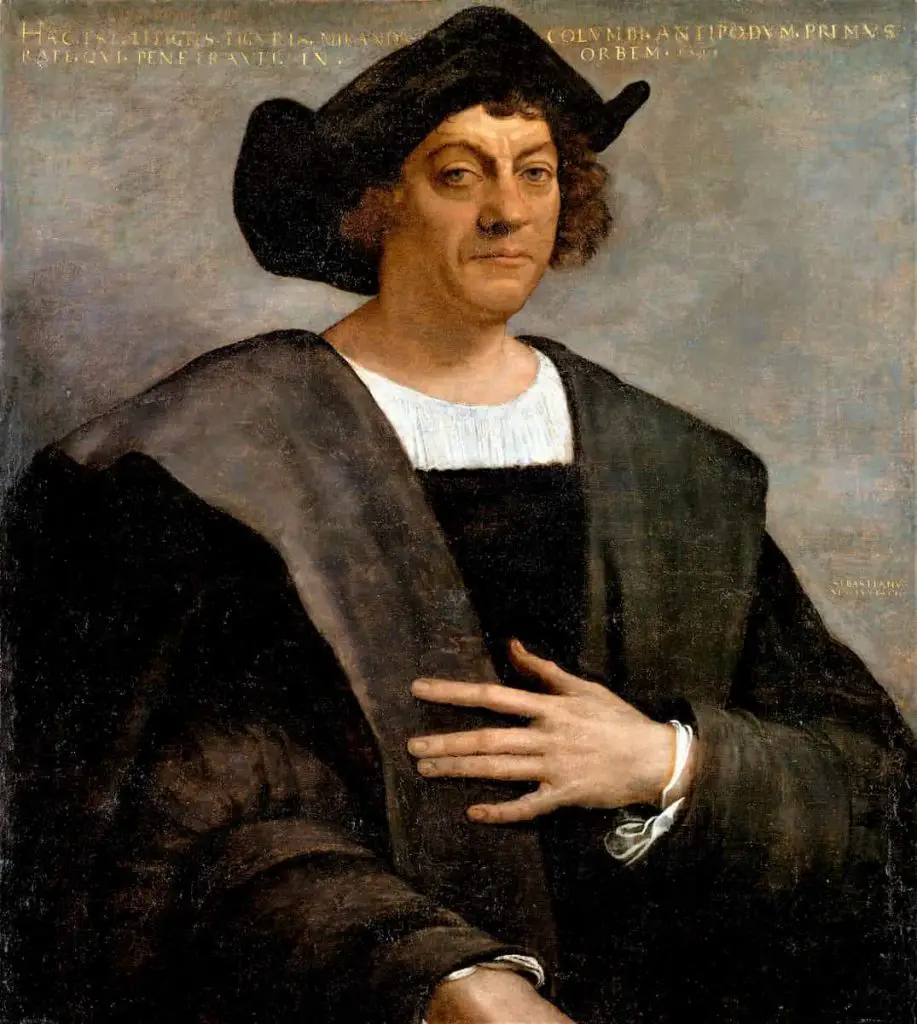
Columbus’ financing of the trip to America.
Cristoforo Colombo was an Italian adventurer and discoverer. Born in Genua probably in 1451. We don’t know exactly what happened to him before he showed up in Portugal to cross the Atlantic. Probably he went to sea very young and became knowledgeable in seamanship and cartography from his many travels. From 1477 he lived in Lissabon.
Portugal was at the time the center for travel, trade, and exploration of the world. For centuries, Venice had been the epicenter for East Asia trading, but the rise of the Ottoman Empire and before them the Mongols had made the trade routes eastwards on land less profitable, and more dangerous.
The Portuguese had explored the African coast towards the south already from the beginning of the 15th century, The goal was obviously to find a way to China, by sea.
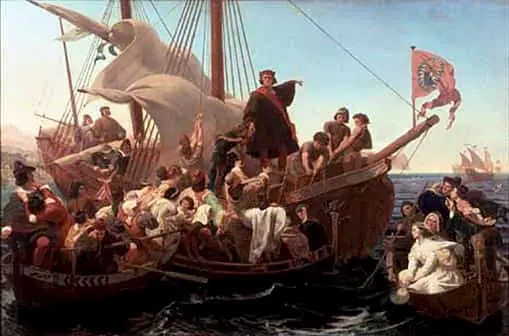 Columbus and his strange and controversial ideas.
Columbus and his strange and controversial ideas.
Columbus made thorough calculations and decided to propose an expedition towards the west to reach China from the other side. He figured that instead of going all the way around Africa to the south, then having to go up the east side, and further east to reach China… He would simply sail straight towards the west and reach China from the backdoor.
So, this was no secret or very strange at the time… The fact that the earth was a sphere was common knowledge, and sailing in whatever direction, you would eventually return from where you set out.
What was controversial was his calculations. Although he was rather good at writing maps, he probably didn’t have any formal degree or exam from any university… And maybe he wasn’t very good at geometry. This could have been the reason why he missed the width of Europe, he missed the distance from Japan to China, and he missed the circumference of the globe.
All this made him totally miss the distance between Portugal and China. And these calculations prevented him from gain support for his expedition from the majority of the European leaders.
He tried the Portuguese King, the Spanish regents, back to Portugal, then to France and England, before Ferdinand II of Aragon and Isabella I of Castile, the Spanish regents, finally agreed to finance his enterprise.
The old Greeks already knew.
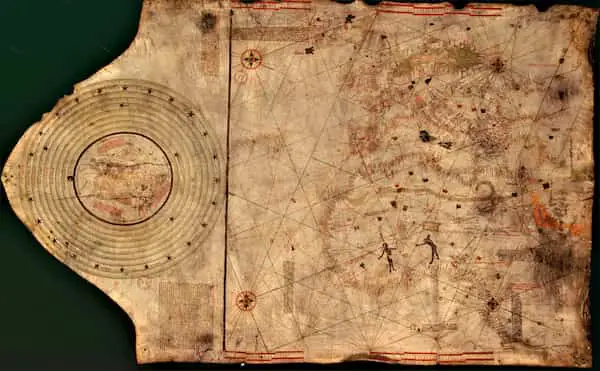
If Columbus had known what the old Greeks knew already 2000 years earlier, he would have agreed with his opponents. He would have understood that to reach China he would have to travel 10.000 nautical miles (12.000 miles, 20.000km) to get there. And that is a very long way. And if he had known that, he probably never would have discovered America.
The stories about the sailors on Columbus’ ship who protested and rebelled because they were afraid they would fall off the edge are possibly not true. Any sailor would know that a ship that sails over the horizon disappears hull first and top last. They were surely much more scared of the vastity of the ocean, sea monsters, mermaids, and the perfectly correct assumption that it was too far to sail.
The idea that Columbus set out to prove the world was round, was a fictional construction from the 19th century.
Pythagoras and Eratosthenes.
Pythagoras, one of the early Greek philosophers and mathematicians, is thought to have discovered the roundness of the earth. We know very little about him or what he discovered or not. But the old Greeks generally thought that the world was a sphere.
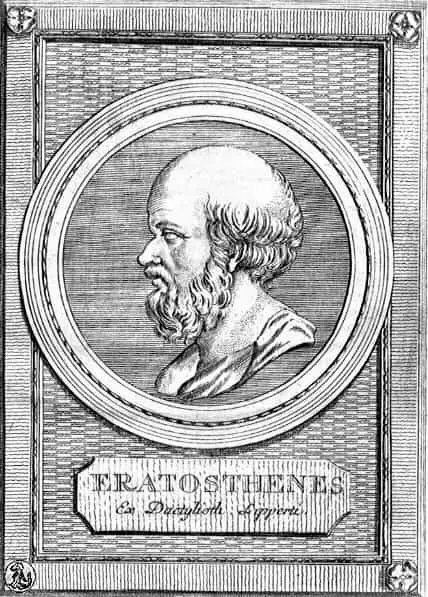
Eratosthenes was a mathematician and astronomer. He was born in 276 BC. in the city of Cyrene in Libya, Cyrene was a Greek town and when Eratosthenes was old enough, he went to Athene to complete his studies. He was then offered to become the librarian of the Library of Alexandria, at that time the biggest collection of scriptures in the world and a center for academic knowledge.
Eratosthenes’ experiment.
Once in Alexandria, Eratosthenes heard about the city of Syene (Aswan) in southern Egypt. What interested him about Syene was the fact that a vertical pillar on the day of the summer solstice, doesn’t leave a shadow. The sun is straight up.
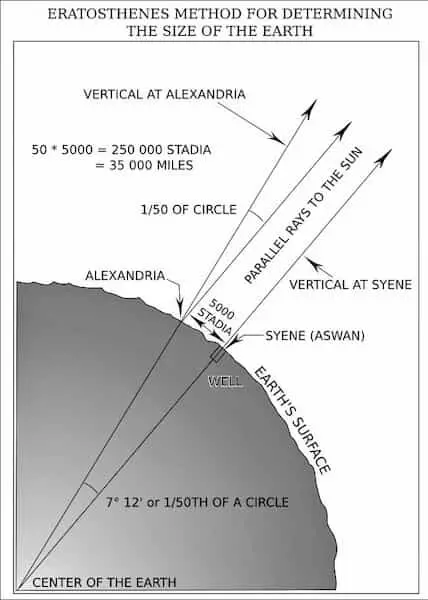
So, he simply calculated the shadow of a vertical rod, in Alexandria on that same day. Using simple geometry, he found that the angle of the sunlight was 7°. As the angle in Syene was 0° and the distance between the two cities was 5000 stadia (a Greek length unit. The circumference of a sports arena, a stadium), he could decide the size of the earth.
And he did so with exceptional precision. He calculated the circumference of the earth to be 250.000 stadia, 50 times the distance from Alexandria to Syene. That equals 39.375 km (24466 miles). The real circumference is 39.941 km (24.818 miles).
He then continued to divide the earth into climate zones, of which the two around the poles were frozen. He placed a grid of parallels and meridians over the surface.
After that, he went out and calculated the diameter of the sun and the distance to it. Here he was a bit short and a little too small about the size. He also calculated the size and distance to the moon. He described the 365-day year with an extra day every fourth year… And he formulated the Sieve of Eratosthenes, a method for finding prime numbers.
Columbus’ miscalculations.
It makes you wonder where all the Greek knowledge became lost, doesn’t it? If Columbus had read the classical Greek literature maybe he wouldn’t have sailed away. But then someone else would have set out to find America because there were many hints of a big continent somewhere to the west.
The Azores were already well known from the 14th century and it was colonized by the Portuguese from the beginning of 1400.
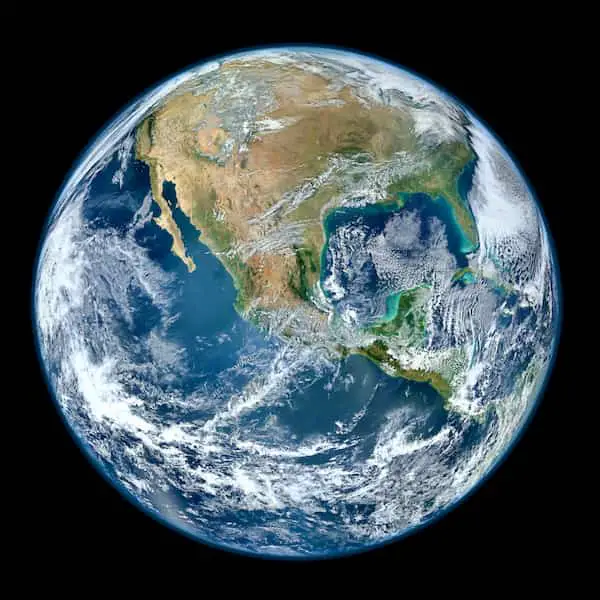
The legendary Atlantic island group of Antillias was first charted on the Pizzigano map of 1424. But these islands, far to the west of the Azores were known to many cultures already in the ancient world.
And finally, we all know that the Viking, Leif Eriksson, went to Newfoundland in eastern Canada 500 years before Columbus.
It is possible that Columbus knew what he would find. It is possible that the common knowledge about the size and shape of the world, already proven by the Greeks, had reached the mazes of the explorer’s mind. He did study the maps and the charts and planned for his trip for ten years before setting out, and it is possible that his insistence on finding China was a way to attract interest from investors, rather than scientists.
But we don’t know for sure.
What we do know is that he never officially accepted that he had ended up nowhere near China… That his mission was a failure, but a failure that with time would be a much greater success than he could ever imagine.
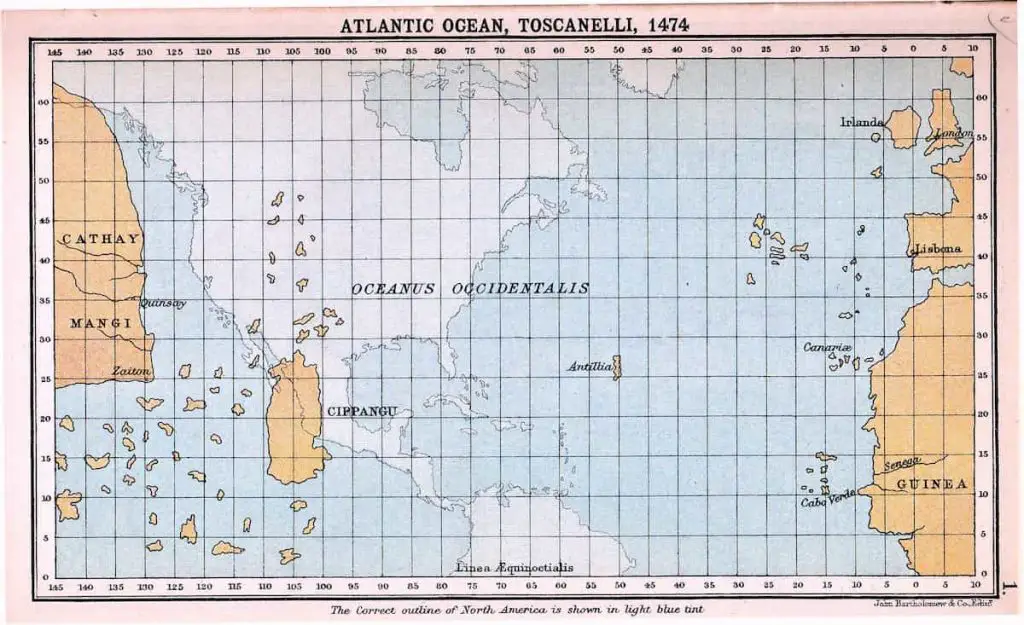
Conclusion
Yes, Eratosthenes proved the world was round by calculating its diameter in the 3rd century BC. This was around the year 1500 AD common knowledge among scientists, sailors, and anyone with a minimum of education.
sources